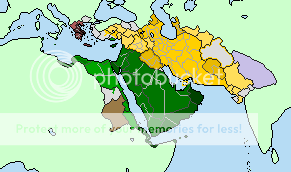In May 1941, Germany launched Operation Barbarossa, the invasion of the Soviet Union. The Red Army was totally unprepared for the rapid and brutal assault, and within two months the Germans had reached the gates of Moscow. In terror and despair, Stalin fled the city to the Volga city of Kubyshev, only to be arrested and shot by conspirators acting under Lavrentiy Beria, head of the NKVD. The Beria government proved no more effective at stopping the German army, and before the onset of winter Moscow and Leningrad had fallen and the Germans were deep into the Caucuses. With the army in tatters and all routes for foreign aid cut off, Beria sued for peace with the Germans. Hitler demanded all regions west of the Volga River, which he described as 'our Mississippi', and the right to deport unlimited quantities of people to the remainder of the Union. Upon arriving back from negotiations to the new capital of Omsk, Beria was captured and shot by an officers' cadre led by Marshall Konstantin Rokossovsky. Knowing the army was not able to reconquer the seized territories immediately, Rokossovsky embarked on a program of reorganization, industrialization and rearmament. The areas west of the Urals were turned into massive military staging zones, and the eastern regions were redivided into smaller, less centralized republics, which were presided over by military commanders. In 1946, four years after the initial peace agreement, the second phase of the Eastern Front was initiated with American atomic bombs being dropped on Berlin and Cologne, and the new Soviet Army (motorized and armored with American aid) streaming across the western frontier. The regions they entered were eerily different from those they had retreated from earlier; the land had been entirely cleared of human life, leaving only the huge facilities in which millions were burned to make way for German settlement of the east. With unrelenting fury the Soviet army continued west until meeting the Western Allies on the Vistula river in early 1950. The Soviet Union regained all her land in the West, which was divided into vast frontier zones for resettlement. As a symbol of the rebirth of the nation, cities which had been wiped off the map during German administration, such as Moscow, were rebuilt to act as regional centers. Germany itself was wiped completely from the map, to ensure that the darkest period in human history would never be repeated.



